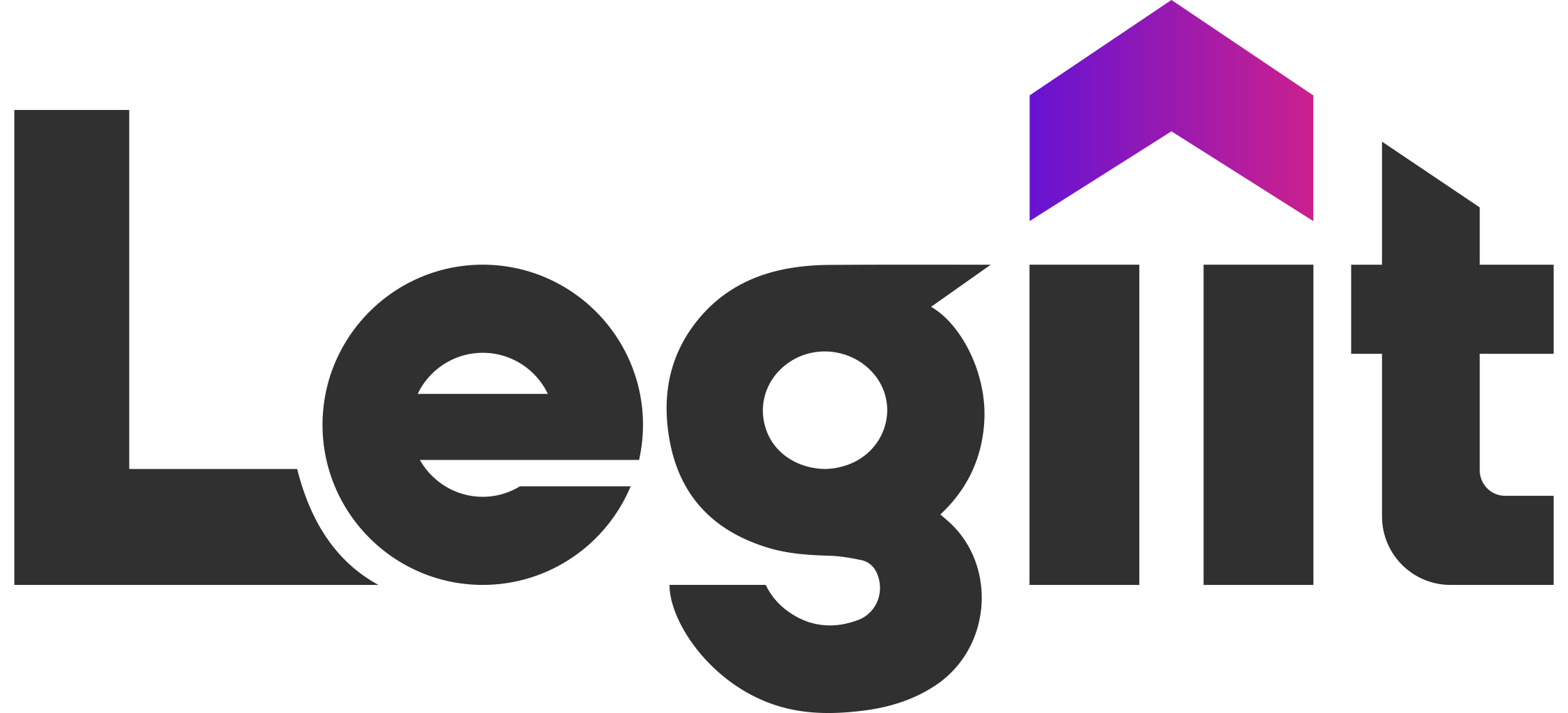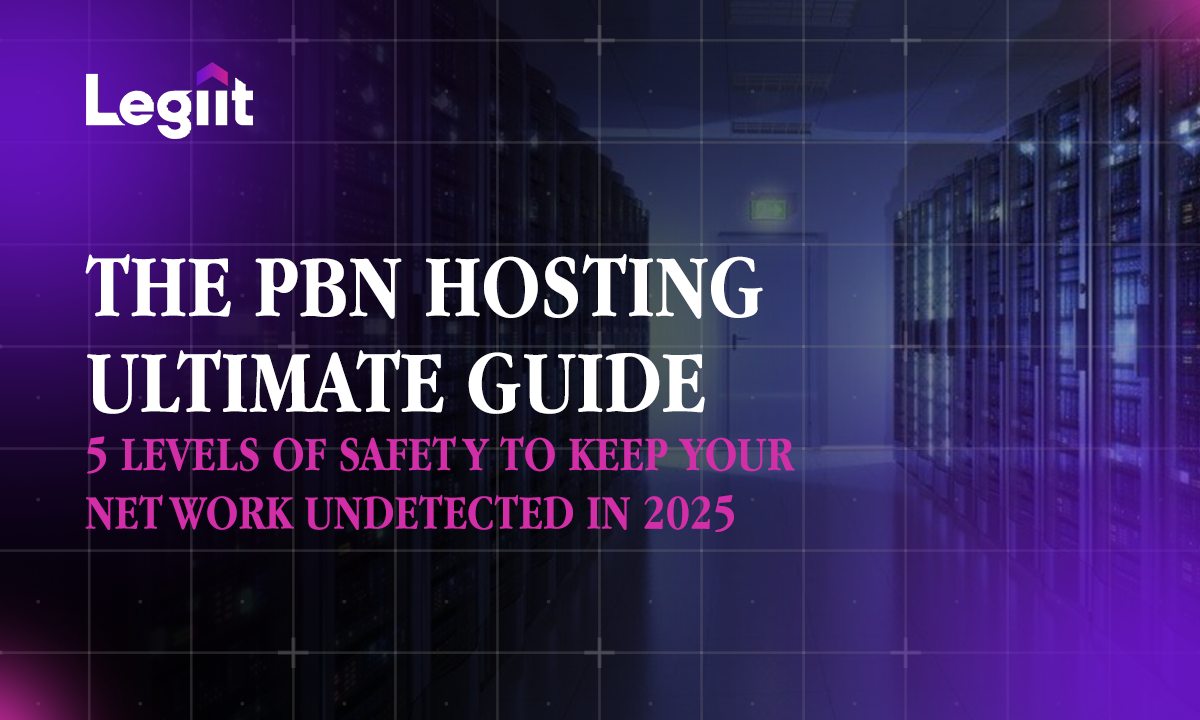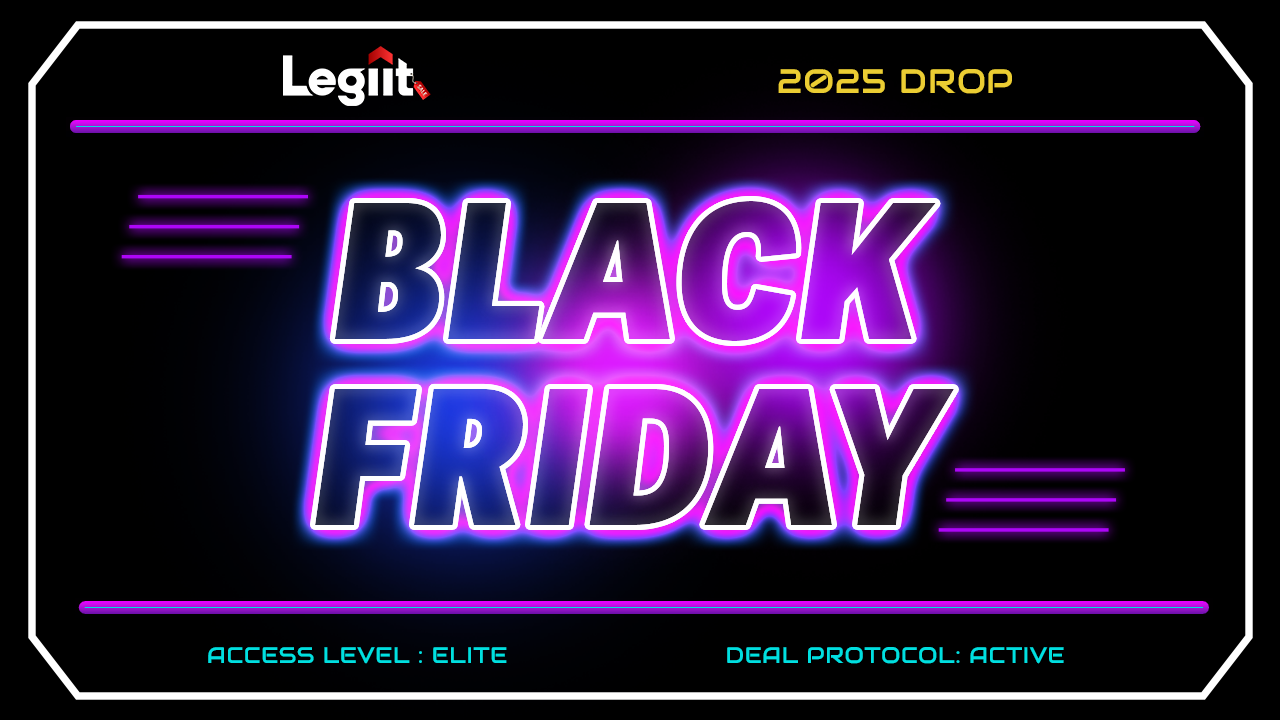Let's be blunt. Building a Private Blog Network (PBN) is one of the most powerful and riskiest things you can do in SEO. Get it right, and you control your rankings. Get it wrong, and you're watching a multi-thousand-dollar investment go up in smoke overnight. The single point of failure that burns 90% of networks? Bad hosting.
It’s the silent killer. You can have perfect domains, great content, and a smart linking strategy, but if your hosting leaves a clumsy footprint, you’ve just handed Google the map to your entire operation.
This guide isn't just another list of hosting companies. This is a framework. I’m going to walk you through the five levels of PBN hosting safety so you can make a smart decision based on your budget, your technical skills, and just how much you’re willing to risk.
Your PBN Hosting Cheat Sheet
Pressed for time? Here’s what you absolutely need to know:
- Safest Method: Premium CDN Hosting (Cloudflare, etc.). It's complex but makes your server origins virtually untraceable.
- Easiest Method: Managed PBN Hosting services. You sacrifice some control for a massive amount of convenience and built-in safety features.
- Biggest Risk: Using cheap, shared "SEO Hosting" or putting all your sites on one VPS server. Don't even think about it.
- The #1 Rule: Diversity is everything. Different hosts, different IPs, different registrars, different themes. The more random your setup looks, the safer you are.
On This Page
- The Enemy: Deconstructing the PBN Footprint
- The 5 Levels of PBN Hosting Safety
- How to Choose: A Decision Matrix
- Your Pre-Launch Safety Checklist
- PBN Hosting FAQs
The Enemy: Deconstructing the PBN Footprint
Before you can hide, you need to know what you're hiding from. A "footprint" is any clue that tells Google, "Hey, these supposedly independent websites are all owned by the same person!" Think of it like a detective story. Here are the clues they look for.
Server-Level Footprints
This is the most common place people get caught.
- Shared IP Address: The absolute cardinal sin. Hosting multiple PBN sites on the same server IP is like leaving your business card at a crime scene.
- Same IP Subnet (Class-C): Hosting sites on IPs like 192.168.1.5 and 192.168.1.10 is still a massive red flag.
- Same Nameservers: Using ns1.crappySEOHost.com for all your domains is a dead giveaway.
- Same Data Center: If all your "unrelated" blogs are hosted in the same building, it looks suspicious.
Domain & WHOIS Footprints
- WHOIS Data: Using the same name, email, or address for all your domain registrations is amateur hour. Always use different, private WHOIS info.
- Same Registrar: Registering all 20 of your domains at GoDaddy on the same day looks unnatural. Mix it up.
CMS & On-Site Footprints
- Common Themes & Plugins: Using the same premium WordPress theme on every site in your network is lazy and easy to spot.
- Google Analytics/Tag Manager IDs: Never use the same GA or GTM tracking code on your PBNs and your money site.
- Shared AdSense/Affiliate Codes: Another rookie mistake that directly links your properties together.
The 5 Levels of PBN Hosting Safety

Not all hosting strategies are created equal. We've broken them down into five levels, from the most dangerous to the most secure. Find where you fit.
Level 1: The Danger Zone (Cheap "SEO" Hosting)
You’ve seen them, shady providers offering "100 IPs for $50!" that scream, "we host PBNs." Google isn't stupid; they know who these providers are. Hosting your network here is like putting all your assets in a bank run by criminals. Sooner or later, the whole operation will get burned. Avoid this at all costs.
Level 2: The Budget Method (Multiple Shared Hosts)
This is the classic, old-school approach: manually buying a dozen different cheap shared hosting plans from mainstream companies (HostGator, Bluehost, etc.). You get natural diversity, but the manual labor is a nightmare. It's incredibly time-consuming and hard to scale. This is for SEOs with a very small budget but a lot of time.
Level 3: The Automated Solution (Managed PBN Hosting)
These are platforms and services built to solve this problem by automating diversification. You add your domain, and they deploy it on a high-quality host with a unique IP, all managed from one dashboard. It's incredibly easy and fast, but more expensive than the budget method. This is for those who value time over money. If you’re also planning your link acquisition in parallel, consider lining up vetted PBN links on Legiit so your hosting and linking strategy move in lockstep.
Level 4: The Professional's Setup (DIY Cloud VPS)
This is for the tech-savvy SEO who wants total control. You buy your own Virtual Private Servers (VPS) from cloud providers like Vultr or AWS and set everything up yourself. It can be cost-effective at scale but requires technical expertise to secure and manage without creating new footprints.
Level 5: The Untraceable Network (Premium CDN Hosting)
This is the most advanced and secure method available. You route your domains through a Content Delivery Network (CDN) like Cloudflare. The CDN acts as a middleman, hiding your server's true IP address and making your site's origin virtually impossible to trace. It's complex to set up correctly, but it offers the ultimate in footprint security.
Ready to Implement a Safe Hosting Strategy?
Feeling overwhelmed by the complexity? Find top-rated freelance experts on Legiit who can build and manage a professional-grade, footprint-free hosting setup for you, so you can focus on what matters: outranking your competition. And if you still need inventory, you can source aged PBN domains from vetted sellers to keep your registration trail clean.
An In-Depth Look at PBN Hosting Providers
The "5 Levels of Safety" gives you a framework for strategy, but how does that translate to real-world providers? The market is dominated by a few key players and models, each with its own pros and cons. Here's a breakdown of the services you'll encounter, including popular options like Easy Blog Networks and LaunchCDN.
Category 1: Automated "Easy PBN" Hosting
These services are designed for maximum convenience and are the most popular choice for users who value speed and simplicity.
- Key Players: Easy Blog Networks (EBN), LaunchCDN, PBN.LTD.
- How They Work: You simply add your domain to their dashboard, and they handle everything else. The platform automatically provisions a new hosting slice on premium cloud infrastructure (like AWS, DigitalOcean, or Vultr), assigns a unique IP address, and often installs WordPress for you. All your sites are managed from one central dashboard.
Pros:
- Incredibly Fast: You can deploy a new PBN site in minutes.
- Very Easy to Use: No technical skill is required. The dashboard is user-friendly.
- Built-in Diversity: They leverage IP addresses from dozens of major, reputable datacenter providers around the world, creating natural diversity.
Cons:
- Higher Cost Per Site: You are paying a premium for the convenience and automation.
- A Shared Footprint: While diverse, all users of that platform (EBN, LaunchCDN, etc.) are ultimately hosted on the same underlying set of providers. This creates a potential, albeit large and difficult to trace, shared footprint.
For broader context on where PBN links fit in the link ecosystem, skim Legiit’s breakdown of backlink types including PBNs before you choose providers.
Category 2: Diversified Shared Hosting Managers
This model offers a different approach to diversity, aiming to mimic the "Budget Method" but with a layer of convenient management.
- Key Player: Bulk Buy Hosting.
- How They Work: Instead of using major cloud providers, these services purchase a large number of different, smaller shared hosting accounts from a wide variety of cPanel hosts around the world. They then give you access to deploy your sites on these unique accounts from a single dashboard.
Pros:
- Maximum Host Diversity: Your sites are on completely different hosting companies, creating a very natural and random-looking portfolio.
- No Platform Footprint: You are not sharing a platform footprint with thousands of other SEOs in the same way you are with "Easy PBN" providers.
Cons:
- Potentially Lower Quality Hosts: The quality of the underlying shared hosts can vary.
- More Complex Management: While managed from one dashboard, the experience can be less seamless than fully automated solutions.
Category 3: The DIY (Do-It-Yourself) Method
As described in Levels 4 and 5, this involves buying your own servers and setting everything up manually. This gives you the most control but also requires the most technical skill. It is not a "service" in the same way, but it's the alternative that services compete against. If you want a step-by-step refresher before going DIY, Legiit’s guide to building a PBN covers workflow considerations you can apply to hosting, too.
The Search for "Free PBN Hosting": Myths and Dangerous Realities
In SEO, if a deal seems too good to be true, it's not just false, it's dangerous. The idea of "free PBN hosting" is one of the most common traps new network builders fall into.
Let's be perfectly clear: there is no such thing as safe, free PBN hosting. The price you pay for hosting is an investment in safety, control, and anonymity. Here are the dangerous "free" options you will encounter and why you must avoid them.
Trap #1: Using Free Web Hosting Providers
You'll find services that offer free web hosting. While tempting for a budget PBN, using them is a guaranteed way to get your entire network de-indexed.
- Massive Public Footprints: All sites on these free hosts share a block of known "free hosting" IP addresses. This is a giant, public red flag that Google can easily identify.
- Poor Performance & Unreliability: These hosts have terrible uptime and slow speeds. A PBN site that is constantly down is worthless.
- Intrusive Ads and Zero Control: Free hosts often inject their own ads onto your site and give you almost no control over the technical environment, making footprint removal impossible.
- Guaranteed Deletion: Their terms of service strictly forbid any activity for SEO manipulation. They will delete your sites without warning.
Trap #2: Building on "Free" Web 2.0 Platforms
Some people try to build networks on free platforms like Blogger, WordPress.com, Tumblr, or similar sites. While these are powerful domains, they are not PBNs.
- You Don't Own Anything: You are building on rented land. The platform owns your site and can delete it at any time, for any reason, without notice. All your investment is lost instantly.
- Extremely Limited Control: You cannot use custom themes, you are restricted from using many plugins, and you have no access to the back-end server. This makes creating a unique-looking site impossible.
- Obvious Platform Footprints: All sites on a platform share the same technical infrastructure (e.g., every site is on a blogspot.com subdomain). It is trivial for Google to see the connections.
The Expert Conclusion: Why "Paid" Equals "Safe"
The cost of proper PBN hosting is a fundamental part of the strategy. It's the price you pay for the servers, the unique IP addresses, the management software, and most importantly, the anonymity required to keep your network safe and effective. In the high-stakes game of PBNs, there is no free lunch.
How to Choose: A Decision Matrix
Still not sure? Use this table to find the right fit for you.
| Hosting Level | Cost / Month | Tech Skill Needed | Setup Time | Safety Score (1-10) |
| 1. Cheap "SEO" Hosting | Very Low | None | Fast | 1 |
| 2. Multiple Shared Hosts | Low | Low | Very Slow | 6 |
| 3. Managed PBN Hosting | Medium | None | Very Fast | 8 |
| 4. DIY Cloud VPS | Medium-High | High | Slow | 9 |
| 5. Premium CDN Hosting
| Varies | Expert | Complex | 10 |
The 4 Golden Rules of Anonymous PBN Registration
Your PBN's security begins the moment you buy a domain. Get the registration wrong, and you've created a permanent, public footprint. Follow these four golden rules to ensure your network stays anonymous from day one.
Rule #1: Diversify Your Digital Paper Trail
- The Amateur Mistake: Registering all PBN domains with a single registrar like GoDaddy. This creates an easy-to-spot "registrar footprint."
- The Professional Play: Spread your domains across a variety of different registrars (e.g., Namecheap, Porkbun, Google Domains, Sav.com). This makes your portfolio look like it's owned by many different, unrelated people.
Rule #2: Leave No Personal Trace
- The Amateur Mistake: Using your real name, address, or email in the public WHOIS record for even a single domain. This is an irreversible, catastrophic error.
- The Professional Play: Enable WHOIS privacy on every single PBN domain, without exception. For added security, use the different privacy services offered by each of your chosen registrars.
Rule #3: Avoid Obvious Patterns
- The Amateur Mistake: Registering a batch of 10 or 20 domains on the same day or week. This looks unnatural and signals a coordinated network built to algorithms.
- The Professional Play: Stagger all your registrations. Register your domains on different days, weeks, and months to mimic random, natural acquisition behavior.
Rule #4: Break the Financial Link
- The Amateur Mistake: Using the same personal credit card or PayPal account for all domain and hosting purchases across every provider.
- The Professional Play: For maximum security, use different payment methods. This can include virtual credit cards, different business cards, or separate, unlinked PayPal accounts to prevent a private financial link from being traced between all your assets.
Your Pre-Launch Safety Checklist
Before you point a single link from a new PBN site, run through this checklist.
- Is the WHOIS information private and unique?
- Was it registered at a different registrar than your other PBNs?
- Is the site on a unique IP address (and preferably a different Class-C subnet)?
- Are unique, non-default nameservers being used?
- Is a unique theme installed (avoiding obvious "PBN themes")?
- Are common "footprint" plugins (like Hello Dolly) deleted?
- Is there absolutely no shared Google Analytics, AdSense, or affiliate code?
- Is the site populated with a unique logo, an About page, and a Contact page to look real?
- Are bad bots (Ahrefs, Semrush, Majestic) blocked via .htaccess or robots.txt?
The Professional's Playbook: What Separates a Pro from an Amateur
So, your network is technically set up. Now comes the part that really matters the part that determines whether your investment pays off for years or gets wiped out in the next Google update.
It all comes down to a few simple, but non-negotiable, habits. This is the final 10% of the work that makes 90% of the difference.
1. Treat Them Like "Mini-Sites," Not Just PBNs
The single biggest mistake people make is treating their network sites like empty shells for links. They post one article with their link and then walk away, letting the site rot.
A pro treats every site in their network like a small, real website. This means adding a new, relevant post every few months to keep it looking fresh and active. It means making sure every site has a unique "About" and "Contact" page. A living, breathing site is a safe site; a dead, abandoned one is a liability waiting to be flagged.
2. A Real Website Links to More Than Just You
Think about any legitimate blog you read. Do they only link to one single website, over and over again? Never. They link out to a variety of helpful resources to support their points. Your PBN sites must do the same.
In every article where you link to your money site, you must also include a link or two to other non-competing, high-authority sites. Think Wikipedia, a major news article, or a well-known industry resource. This simple habit makes your outbound link profile look natural and helpful, not purely self-serving and manipulative.
3. Become a (Slightly) Paranoid Network Monitor
The "set it and forget it" approach will get you burned. It's not a matter of if, but when. A professional PBN manager is a little bit paranoid, and in this game, that's a good thing.
Once a month, you need to do a quick health check. Is every site still indexed in Google? Do a quick site:yourpbndomain.com search. Has a site been hacked or spammed with comments? Give each one a quick visual check. Being the first to know when a single site has a problem is the key to isolating it and protecting the rest of your network.
4. Understand the Power of Patience
The temptation to get your links live immediately is huge. Amateurs act fast, but pros act smart. A brand new PBN site pointing a powerful link on its first day looks incredibly suspicious.
A pro knows the power of patience. First, let a new PBN site "simmer" for a few weeks after it goes live before you publish the first post with your money site link. Second, when you build out your network, drip your links out over months, not days. Slow, steady link velocity always wins the long game because it looks like natural, organic growth.
PBN Hosting FAQs
What is a PBN?
A PBN is a network of websites that you own and control, built on aged or expired domains that have existing authority. The primary purpose of these sites is to build backlinks to your main website (your "money site") to improve its search engine rankings.
What is PBN hosting?
PBN hosting is a specialized type of web hosting designed to hide the "footprints" that connect the websites in your network. It prioritizes diversity of IP addresses, server locations, and hosting providers to make each site appear independent and unrelated to the others.
How many PBN sites can I put on one IP address?
One. The correct answer is always one. Never host more than one PBN domain on a single IP.
Is PBN hosting illegal?
No, it is not illegal. However, building PBNs to manipulate search rankings is against Google's Webmaster Guidelines and carries the risk of a ranking penalty if detected.
Is PBN good for SEO?
A well-managed, high-quality PBN can be extremely effective for SEO, providing powerful, controllable backlinks that can significantly boost rankings. However, a poorly managed PBN is very bad for SEO and will likely result in a severe Google penalty. It is a high-risk, high-reward strategy.
What's the difference between PBN hosting and regular web hosting?
Regular hosting prioritizes performance and features for one website. PBN hosting prioritizes anonymity, diversity, and footprint avoidance for managing a portfolio of websites.
How many PBN sites can I put on one IP address?
One. The correct answer is always one. Never host more than one PBN domain on a single IP address.
Can I use Cloudflare for my PBNs?
Yes, and you should. Using the free Cloudflare plan for each of your PBN sites is a smart Level 5 strategy to hide your origin IP and make your network look more natural.
Stop Guessing and Start Ranking Safely
PBN hosting isn't just a technical task; it's a strategic discipline. The difference between a network that prints money and one that gets incinerated is a deep understanding of footprints and a commitment to diversity. Doing it right is complex and time-consuming.
Instead of risking your investment by doing it yourself, you can hire a vetted professional to handle all the technical details. Explore the Legiit marketplace to find top-rated PBN experts with proven track records who can help you outrank your competition safely.















 Download
Download